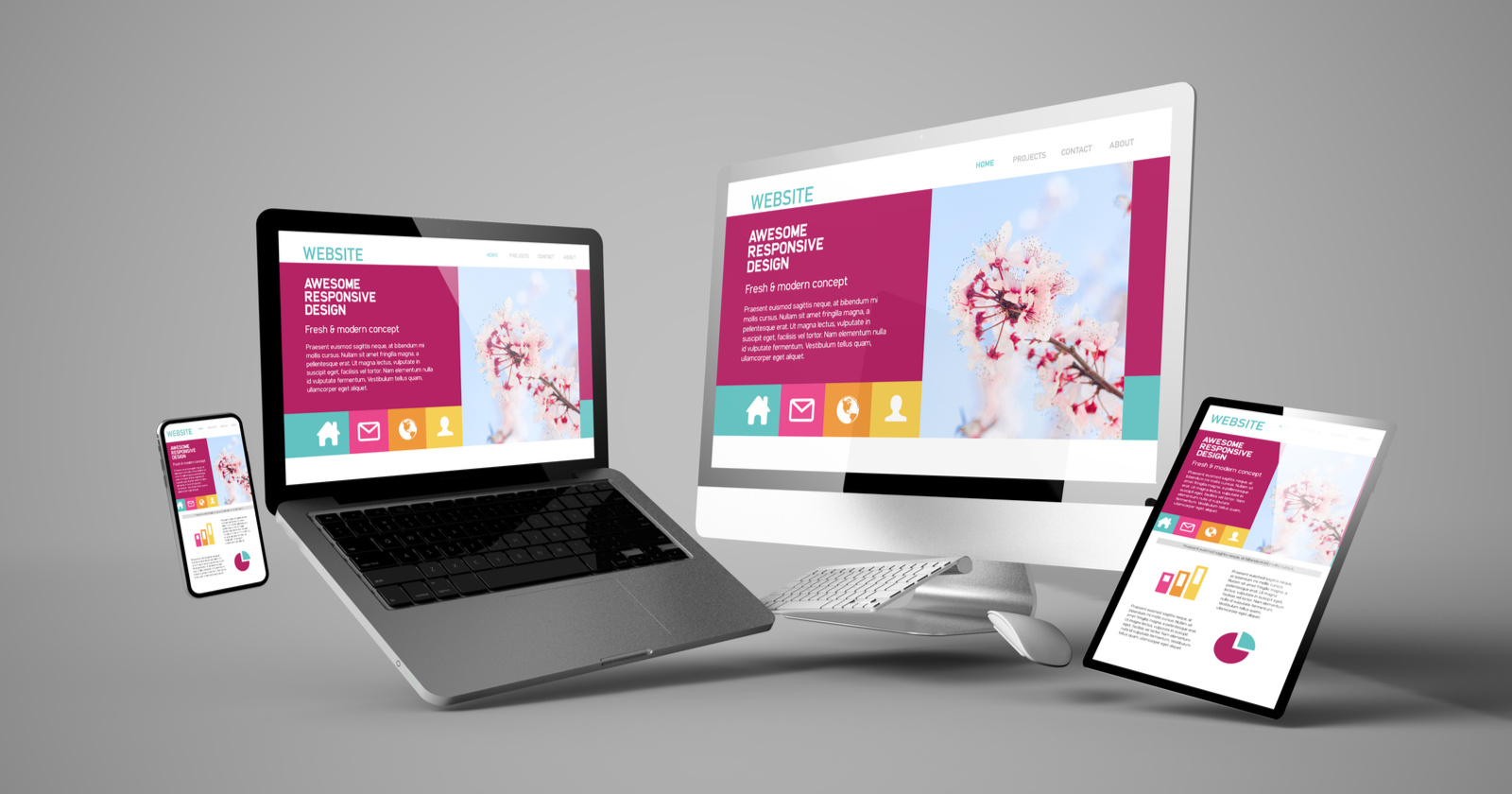Just How Responsive Internet Style Influences Individual Experience Throughout Instruments
Receptive internet layout plays a crucial function in forming customer experience throughout a wide variety of devices, as it makes it possible for websites to fluidly adapt to differing display sizes and resolutions. Comprehending these interconnected elements increases important inquiries regarding how companies can take advantage of responsive design to optimize customer engagement and fulfillment.

Relevance of Responsive Style
As individuals increasingly accessibility sites on a variety of devices, the significance of receptive design comes to be paramount. Responsive design makes sure that a web site's format and web content adapt seamlessly to various display sizes, alignments, and resolutions (Web design in Penang). This flexibility is vital in today's electronic landscape, where customers engage with web content on smartphones, tablets, laptop computers, and desktop computers
The significance of receptive design prolongs beyond mere aesthetics; it enhances use and availability, providing individuals with a constant experience regardless of the device utilized. A well-implemented responsive layout decreases the demand for users to zoom or scroll exceedingly, simplifying navigating and improving total complete satisfaction.
Additionally, receptive layout is crucial for search engine optimization (SEARCH ENGINE OPTIMIZATION) Internet search engine, such as Google, prioritize mobile-friendly web sites, suggesting that a receptive site is much more most likely to place higher in search engine result - Web design in Penang. This not just increases visibility however likewise drives website traffic and involvement
Benefits for Mobile Users
Mobile individuals experience distinctive benefits when interacting with receptive websites. Largely, these websites are made to adapt perfectly to different display dimensions and positionings, making certain an optimum watching experience no matter the device being used. This flexibility boosts functionality, enabling individuals to navigate with web content easily without the requirement for extreme scrolling or zooming.
Furthermore, responsive style gets rid of the irritation of coming across non-optimized websites that might lead to distorted designs or missing out on performances on mobile phones. Users take advantage of a regular interface, which fosters familiarity and decreases cognitive lots, allowing them to concentrate on their tasks instead of battling with navigating.
Moreover, responsive internet sites boost accessibility by incorporating touch-friendly components, such as bigger buttons and streamlined food selections, which cater specifically to mobile interactions. This attentiveness to mobile customer experience not just increases user fulfillment however likewise encourages longer engagement, as visitors are more probable to remain on a site that is easy to make use of.
Eventually, the benefits of receptive website design for mobile users add to a more satisfying and reliable surfing experience, enhancing the importance of embracing this method in today's multi-device landscape.
Influence on Filling Speed
The influence of receptive internet design on packing speed is a crucial variable in enhancing user experience across gadgets. Receptive internet style enhances photos and material for various screen dimensions, guaranteeing that just the needed elements are packed based on the tool's capacities.
In addition, receptive style practices often entail making use of versatile grids and designs, which adapt to different screen resolutions. This versatility minimizes the demand for extreme resizing or refilling of pages, further enhancing speed. Search engines like Google prioritize fast-loading web sites in their rankings, making responsive design not just a have a peek here user-centric option yet also a vital element for search engine optimization.
However, it is important to note that bad execution of responsive style can bring about puffed up code and unnecessary aspects that might prevent loading speed. Consequently, careful planning and execution are crucial to completely take advantage of the advantages of receptive website design in enhancing packing rate and, subsequently, user experience throughout all devices.
Enhanced Navigation Experience
How can responsive website design transform the navigation experience for users? Responsive web layout boosts navigating by ensuring that food selections, switches, and web links adjust flawlessly to numerous display dimensions and positionings. This versatility is vital as individuals significantly gain find more info access to websites from a varied variety of devices, varying from mobile phones to tablets and computer.
Receptive styles prioritize user-centric navigation by streamlining accessibility to crucial material. Hamburger food selections, which are small and expandable, allow for reliable use of space on smaller sized screens, minimizing mess while preserving ease of accessibility. This streamlined strategy not only help in functionality but additionally improves total interaction, as users can swiftly find details without unnecessary scrolling or looking.

SEO Benefits of Responsiveness
Receptive internet layout uses considerable SEO benefits that can boost a web site's exposure and ranking in search engine outcomes. A responsive website utilizes a single Link for both desktop computer and mobile versions, which simplifies the indexing procedure for search engines.
Furthermore, Google focuses on mobile-friendly sites in its positions, making responsiveness a critical aspect in search engine optimization methods. The mobile-first indexing approach embraced by Google means that the mobile variation of a website is thought about the main variation, further highlighting the relevance of a responsive style.
Boosted individual experience, an all-natural outcome of receptive design, likewise adds to SEO performance. When individuals locate it simpler to browse a website, they have a tendency to remain longer and involve more, which can decrease bounce rates and signal to click for source browse engines that the web content is relevant and important.
Conclusion
Finally, receptive internet layout plays an essential function in improving user experience across different gadgets. By making certain smooth versatility to different screen sizes, it enhances mobile use, decreases filling times, and assists in intuitive navigation. The advantages extend beyond customer satisfaction, as a responsive layout also contributes favorably to search engine optimization efforts. Eventually, the application of responsive design is crucial for cultivating customer involvement and keeping an one-upmanship in a significantly mobile-centric electronic landscape.